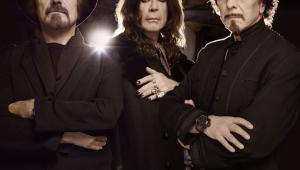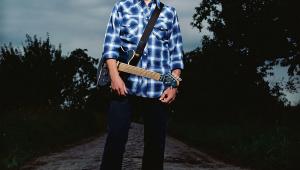This Week in Music, March 26, 2013: Welcome to the “Machines” of the Strokes and Depeche Mode Page 3

Stephen Stills: Carry On
Archival release (Atlantic/Rhino; tour dates)
If you’re a fan of Crosby, Stills & Nash and you own David’s Voyage and Graham’s Reflections, you likely have been wondering when those sets, with the big C and N on their spines, were going to be linked on your shelf with an S box. Well, here it is.
Of course, just as the point of those previous collections was to remind you that Crosby and Nash have each been much more than just one third of an abbreviation, Carry On goes a long way, on four CDs, to tell the complete musical narrative of Stephen Stills. And so, in addition to 24 tracks related to Crosby, Stills & Nash (with or without the Y guy), there are 11 songs by Buffalo Springfield and 43 by Stills himself.
Among the 82 total selections are 26 previously unheard demos, mixes, versions, or songs, and the set opens with the earliest of these: the never-before-released Stills original “Travelin’,” taped at a Voice of America radio relay station in Costa Rica in 1962, when he was 17. Other rarities: 1964’s “High Flyin’ Bird” by the Au Go Go Singers (his early outfit with Richie Furay), 1970’s “No-Name Jam” with Jimi Hendrix, and three more unreleased songs: 1968’s “Who Ran Away?,” 1973’s “Little Miss Bright Eyes,” and 1984’s “Welfare Blues.”
The 116-page booklet is somewhat modest compared with the 132-pager for Crosby’s Voyage and the 152-pager for Nash’s Reflections, and it lacks track-by-track explanatory notes by the artist, which both of those sets had. (In fact, oddly enough, there isn’t a single word from Stills; even the intro was written by Nash and Joel Bernstein, the compilation producers of all three boxes.) However, you do get lengthy essays by Michael O’Hara Garcia, Daniel J. Levitin, and David Bender, which, respectively, are historical, musical/psychological, and personal.
It’s good to remember that Stills singlehandedly wrote nearly half of the Springfield’s total output, including “Go and Say Goodbye,” “For What It’s Worth,” “Bluebird,” and “Rock & Roll Woman.” He also was the sole author of CSN/Y’s “Helplessly Hoping,” “4+20,” “Find the Cost of Freedom,” “Dark Star,” and yes, “Suite: Judy Blue Eyes.” All of that is a great springboard for enjoying the wealth of his solo material, from 1970’s “Love the One You’re With” to several tracks from the most recent Stills studio album, 2005’s Man Alive! Dig in.

Gene Clark: Here Tonight — The White Light Demos
Archival release (Omnivore)
Think of the original Byrds, and you may think of Roger McGuinn and David Crosby first, but it was Gene Clark who wrote the bulk of the band’s original material for Mr. Tambourine Man and Turn! Turn! Turn! before leaving in 1966. His first solo album, Gene Clark with the Gosdin Brothers, was released in 1967. Then, after two outings with Doug Dillard as Dillard & Clark, he made the acclaimed (but commercially ignored) White Light. Among the 12 recently discovered solo-acoustic demos here, six of the songs would appear in final form on White Light, two were included as bonus tracks on the album’s 2002 reissue, and an alternate version of “Here Tonight” surfaced on the Flying Burrito Brothers’ 1973 compilation Honky Tonk Heaven. The three remaining tracks are original songs that have never been heard before: “For No One,” “Please Mr. Freud,” and “Jimmy Christ.” The booklet includes an essay by Clark biographer John Einarson.

Steve Forbert: Alive on Arrival + Jackrabbit Slim
Reissue (Blue Corn; tour dates)
Steve Forbert’s first two albums, 1978’s Alive on Arrival and the following year’s Jackrabbit Slim, are repackaged together in a two-CD set with liner notes by Rolling Stone contributing editor David Wild. You also get 12 bonus tracks: five extra songs from each album’s sessions, an alternate version of “Make It All So Real,” and a live recording of “Romeo’s Tune,” taped in 1979 at the Palladium in New York City.





























































